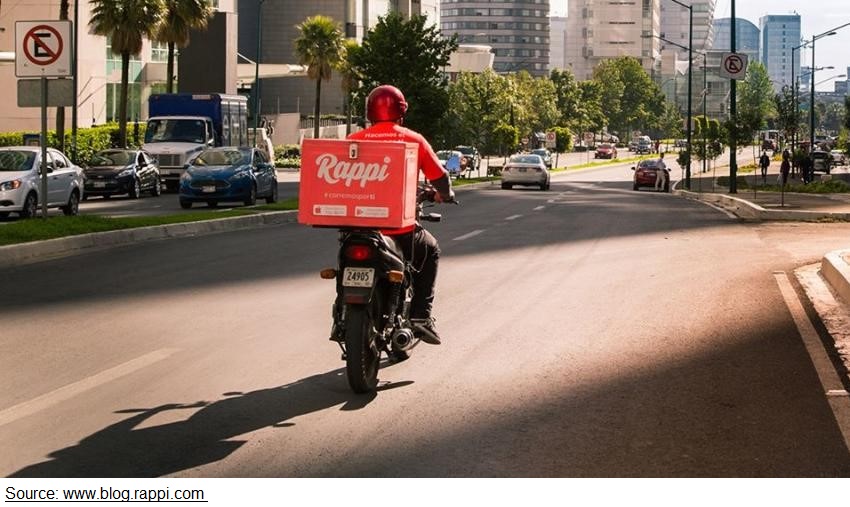Andean Peaks and Silicon Valleys: Entrepreneurship in Colombia

Shifting consumer behaviors, supported by advances in infrastructure, have increasingly enabled the Colombian economy through technology. More than ever before, Colombian entrepreneurs today have new opportunities within their reach – and they know it: 72% of Colombian adults view entrepreneurship as a worthy career path.

by Vince Wong, Cornell Tech MBA ’17

In Latin America, there is a proverb that heeds a familiar warning to would-be risk takers: “No dejes camino viejo porsendero nuevo”. Rather than travel through the unknown, keep to the proven path. This strikes a resonant chord across the region where entrepreneurship has traditionally taken the form of highly diversified yet conservative family businesses. Family businesses share the dynastic trait of inherited ownership and control by a family over generations. In 2014, Ernst & Young estimated that family businesses alone make up more than 80% of private sector activity,represent 85% of companies, and generate 60% of GDP in Latin America.[1]
In Colombia,the family business model emerged in part due to the country’s weak adherence to the rule of law.[2] Colombia consistently indexes as one of the world’s worst environments for contract enforceability (177 out of 190 in 2016[3]),which has pushed family businesses to seek opportunities with internal, trusted stakeholders over external ones. As a result, enterprise organically steered towards diversification and vertical integration over time to retain maximal control under one roof. Colombian firms also severely lack access to outside capital,elevating the importance of familial networks. According to the Colombian Ministry of Finance, there are roughly 700,000 registered firms in the country,only 800 of whom have access to capital markets. The nation’s limited access to capital ripples throughout the economy – 94% of Colombian businesses dissolve within 3 years of establishment.[4]
However,recent initiatives by public entities have unlocked the potential for a new ecosystem-driven entrepreneurship model in Colombia, indicating a sea change from the traditional fiefdom model of yore. Launched in 2012 by the Ministry of Industry and Tourism, iNNpulsa has served as an early-stage fund proxy, having invested$80 million to support the development of 1,200 companies by early 2016.[5]In 2009, the city of Medellín, notorious for its prior role in the drug trade,established Ruta N, a co-working space and investment fund that supports local startups. The international community took notice of the city’s initiative as well as other major developments in green urban planning, with the Wall Street Journal awarding Medellín the coveted title of “World’s Most Innovative City”in 2013.[6]

Non-governmental organizations have similarly contributed to the rise of new resource channels for scaling local talent. Endeavor Colombia, which is part of Endeavor Global,offers a high-impact mentor network for entrepreneurs. The shared resources ofa far-reaching ecosystem have helped transform local startups such as Rappi,the Latin-American equivalent of Postmates, into prime candidates for unicorn status.[7]After just over a year of operations, Rappi, also a graduate of the prestigious accelerator Y Combinator, raised a Series A round led by Silicon Valley’s most prolific venture capital firms, who have tended to shy away from Latin American companies in the past. The arrival of entrepreneur-oriented support systems has helped level the playing field for fledgling enterprises by providing much-needed resources in an otherwise reluctant capital environment.
Shifting consumer behaviors, supported by advances in infrastructure, have increasingly enabled the Colombian economy through technology. In 2010, the government rolled out its ambitious Vive Digital program and achieved 8 million new broadband connections over the following 4 years. By 2018, the government plans to extend coverage to 27 million connections.[8]The effects of new infrastructure have strengthened the nation’s digital profile. According to Euromonitor[9],nearly 60% of the population used the Internet in 2016, having grown from 40%in 2011. Meanwhile, smartphone ownership has surged from just 4% penetration in 2011 to 25% in 2016.
Likewise, the tech sector has grown substantially in order to support the rapid evolution of consumer preferences. In 2007, the app-based economy was virtually non-existent but today employs 83,000 professionals.[10]Rappi has tapped into an emergent freelance economy in all major Colombian cities to source staffing for its courier services. The startup currently has 3,000 active rappitenderos, or Rappi-branded couriers, though this tally is roughly expected to double on a monthly basis as the platform expands its service offerings.

More than ever before, Colombian entrepreneurs today have new opportunities within their reach – and they know it: 72% of Colombian adults view entrepreneurship as a worthy career path.[11]Even as new tax legislation approved in early 2017 poses a risk to disposable incomes, Colombia’s middle class and overall economy show stable growth while peer markets across Latin American continue to stagnate or even contract. However,the growing middle class will eventually outpace the current ecosystem’s capacity,and a new wave of entrepreneurs will spring into action to serve the new market. In the past, they would have needed to decide between two paths, the unknown and the proven. Thankfully, they no longer have to choose.
[1] Ernst & Young: Family Business Yearbook, 2014http://familybusiness.ey.com/pdfs/page-55-56.pdf
[2] The Economist: “Business in Latin America – InsideStory”, Dec. 1997 http://www.economist.com/node/107775
[3] World Bank: Ease of Doing Business Report, 2017 http://www.doingbusiness.org/data/exploreeconomies/colombia
[4] El Tiempo: “Nos alegra el fracas ajeno y nos daenvidia ver a otros triunfar”, Nov. 2015 http://www.eltiempo.com/archivo/documento/CMS-16420295
[5] El País: “Gobierno ha invertido US$80millones en apoyo a los emprendedores”, Mar, 2016 http://www.elpais.com.co/economia/gobierno-ha-invertido-us-80-millones-en-apoyo-a-los-emprendedores.html
[6] Progressive Policy Institute: “Tracking Colombia’s AppEconomy”, Oct. 2016 http://www.progressivepolicy.org/wp-content/uploads/2016/10/Colombia-ENGLISH.pdf
[7] Endeavor: “Endeavor Colombia le dala bienvenida a dos importantes empresas del sector tecnológico”, Jun. 2016 http://endeavor.org.co/endeavor-colombia-le-da-la-bienvenida-a-dos-importantes-empresas-del-sector-tecnologico/
[8] Colombia Ministry of Information Technologies andCommunications: Vive Digital, 2014-2018 https://www.mintic.gov.co/portal/604/articles-5193_recurso_2.pdf
[9] Euromonitor Passport, March 2017
[10] Progressive Policy Institute: Tracking Colombia’s AppEconomy, Oct. 2016 http://www.progressivepolicy.org/wp-content/uploads/2016/10/Colombia-ENGLISH.pdf
[11] Global Entrepreneurship Monitor: Colombia CountryProfile, 2016 http://www.gemconsortium.org/country-profile/52
